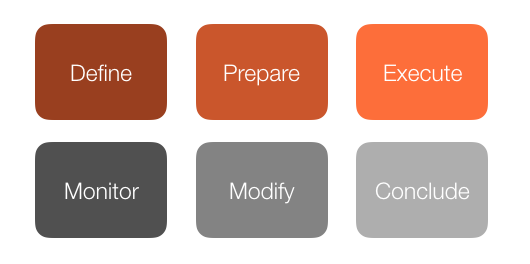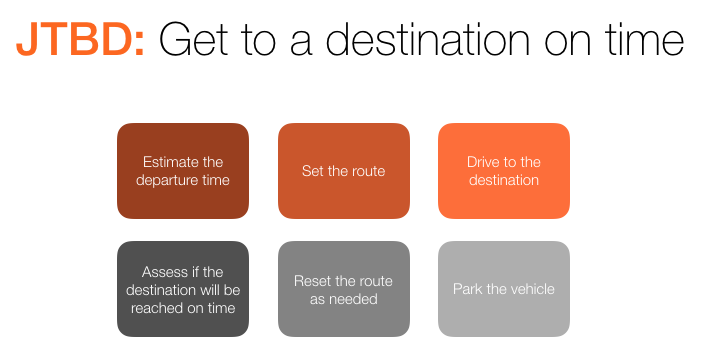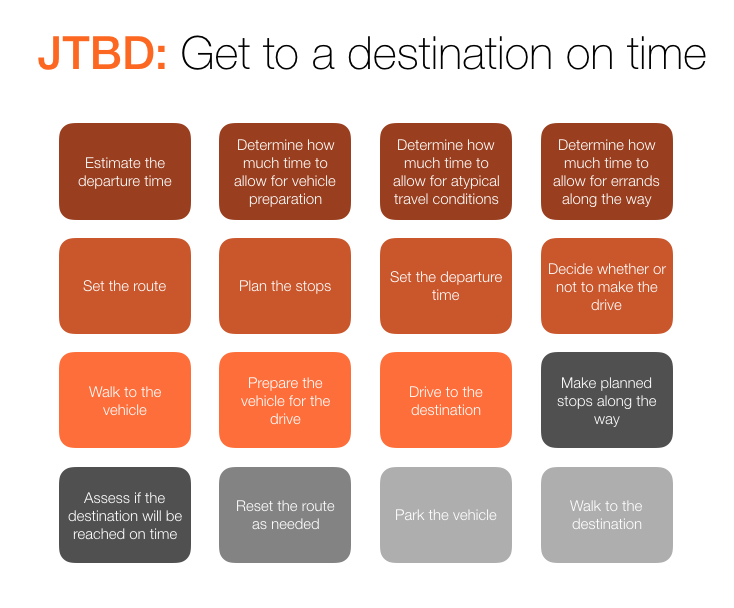July 18, 2017
Improve Your NPS with Jobs-to-be-Done

If you're looking for ways to improve your Net Promoter Score, Jobs-to-be-Done can help you determine what to do to transform your detractors to promoters.
Net Promoter Score (NPS) is an extraordinarily popular and quite effective technique for measuring customer satisfaction for a product or service. A business surveys its customers asking, "On a scale of 0 to 10, with 0 being 'extremely unlikely' and 10 being 'extremely likely,' how likely are you to recommend us to a friend?"
The customers who answer 9 or 10 are your "promoters." Those who answer 0 to 6 are "detractors." Your Net Promoter Score is the difference between the percentage of respondents who are promoters and the percentage of respondents who are detractors.
The business now has a single number indicating customer satisfaction. Improving the number is likely to improve customer retention and growth--a higher NPS should lead to more referrals.
But, how do you know why your detractors won't recommend your product?
What is causing their dissatisfaction?
And what can you do to your product to improve customer satisfaction?
You can use Jobs-to-be-Done to answer these questions and figure out precisely how to change your product to transform detractors into promoters.
Why are your customers using your product?
To know why your customers are dissatisfied with your product, you need to know why they are using it in the first place.
According to Clay Christensen, the Harvard Business School professor who popularized Jobs-to-be-Done Theory, "Your customers are not buying your product, they are hiring it to get a job done." Their struggle to get the job done with their existing solutions leads them to hire a new product that they believe will get the job done better. If the new product does not get the job done better, the customer will fire it.
In this context, a "job" is not necessarily an occupation. It's any goal that a person wants to achieve in their personal or professional life.
To determine if a job represents a good market opportunity and is something you can align your team around, you can use the following criteria:
- A succinct statement with a clear action verb and direct object e.g. "acquire customers," "buy a used car," or "restore artery blood flow."
- No solutions in the job statement. If you include a solution in the job statement such as, "Play MP3s," then you focus your company on a technology instead of the customer and you risk missing big innovations that are possible from new technologies such as streaming music.
- A job statement should stand the test of time. Take "create a mood with music" as an example. People have been trying to do that since the first noise was made by the first human and will continue trying to do it forever. "Buy a used car" will go away whenever people stop owning cars, but cars have already been around for over a hundred years and will likely last at least a couple of decades more. The projected time horizon of the job's existence helps you determine the level of risk in your market.
- A large number of people (or at least a small number of people who are willing to pay a lot of money to get it done), should wake up in the morning on a regular basis thinking, "I need to get this job done!" If your job statement doesn't pass this "wake up in the morning" test, it's likely that the job is not important enough for anyone to use a product to get it done better.
Sometimes the job (the goal your customers are trying to achieve with your product) is obvious.
For instance, if salespeople are using your CRM, it's pretty clear they are trying to "acquire customers" and "retain customers," two clear jobs.
Sometimes it is less clear. What job does Slack serve?
In such cases, interviewing your customers is a good way to determine the job.
You may find your product is being used by your customers to serve multiple jobs. This makes your situation a little more complex and the way to deal with it is another topic for another post.
What is causing customer detractors to be dissatisfied?
Now that you've figured out what job your customer is hiring your product for, you need to determine your detractors' problem. Why are they dissatisfied?
More often than not, their problem is that your product is not getting the job done well enough. Your detractors are not achieving their goal as quickly and as frequently as they would like, and they are blaming your product for not helping them.
Let's imagine we're on the product team for Google Maps. Users are hiring our product to "reach a destination on time," among other jobs. Knowing our users blame us for being late to their appointments is not enough information to understand what to build to turn the detractors into promoters.
We need to be more specific.
Fortunately, we can break a job down to precisely identify where the struggle is occurring and how severe it is in the market.
First, we list the job steps, which tell the story of how the job gets done, independent of the existing solutions in the market. All jobs have six categories of job steps.

For example, here are 6 steps in the job of "reach a destination on time," one for each category:

You can hypothesize the job steps in a job by thinking through the last time you tried to execute the job and taking note of what you had to define, prepare, execute, monitor, modify, and conclude. When you find yourself thinking about the products you used to do those things, ask yourself why you used those products until you get to a statement that does not include a solution.
In all there are sixteen steps in "get to a destination on time:"

Next, we identify the customer needs in each job step.
The needs are the actions the job executor must take in order for the job step to be completed successfully. The faster the action is completed and the more accurate the outcome of the action, the more successful the job step will be and the more satisfied the customer will be. In other words, needs that can only be met slowly and inaccurately with the existing solution will cause the customer to be dissatisfied.
We can hypothesize the needs by taking note of the variables in each job step that could cause the process to go off track. For example in the step of "plan the stops," the variables are:
- The sequence of the stops
- Where the stops are
- The number of stops
- The routes between the stops
- Open times of locations where you need to run errands
- Wait times at the locations
- How long it takes to park at the locations
If your customer cannot quickly and accurately determine this information, she cannot plan her stops in such a way that she will reliably reach her final destination on time. The job will go off track, causing anxiety.
To validate the job steps and needs, you can interview job executors. To validate your assessment of whether or not the job executors are dissatisfied with their ability to meet the needs, you can survey job executors on their importance and satisfaction of each need.
To figure out why your detractors, specifically, are dissatisfied, you can have them take your needs survey. The needs that have low satisfaction ratings will give you a precise problem to solve that will increase the satisfaction of your customer and turn your detractors into promoters.
How to improve customer satisfaction
Now that we know the problem--the unmet needs in the job-to-be-done--how do we come up with a solution that will be good enough to turn our detractors into promoters?
The first step is to analyze the existing solutions in the market--not just your obvious competitors but any product, service, or manual process someone can use to get the job done. Instead of doing a feature to feature comparison between your products and your competition, you look at how long it takes to satisfy the unmet needs in the job and how accurately customers can do it with the existing solutions.
The speed and accuracy of satisfying the need with the existing solutions is the benchmark you need to beat with your new product or feature idea. If your new idea is not faster and/or more accurate than the benchmark, there is no reason for job executors to switch to your solution. Time to think of another idea.
Once you do have an idea to satisfy the need faster and more accurately, you can check-in with your customers at various intervals in your product development process--idea stage, prototype, post-release, etc. Ask them how satisfied they are with their ability to meet the targeted needs with this new feature. If they answer with more satisfaction than they did before seeing the new product or feature, then you are on your way to transforming the detractors to promoters.
NPS is a useful tool for tracking customer satisfaction. However, to take action against the results, it's extremely helpful to have a method like Jobs-to-be-Done to specify the cause of the dissatisfaction and create a plan to turn your detractors into promoters.
Posted by Jared Ranere View all Posts by Jared Ranere
Learn How to Grow Faster
Learn how to use JTBD to accelerate your growth and create equity value faster.





